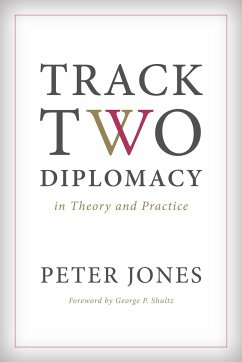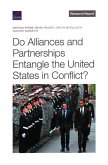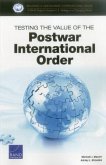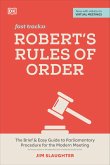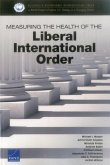Peter Jones
Track Two Diplomacy in Theory and Practice
Peter Jones
Track Two Diplomacy in Theory and Practice
- Broschiertes Buch
- Merkliste
- Auf die Merkliste
- Bewerten Bewerten
- Teilen
- Produkt teilen
- Produkterinnerung
- Produkterinnerung
Peter Jones is Associate Professor in the Graduate School of Public and International Affairs at the University of Ottawa, and an Annenberg Distinguished Visiting Fellow at the Hoover Institution.
Andere Kunden interessierten sich auch für
![Do Alliances and Partnerships Entangle the United States in Conflict? Do Alliances and Partnerships Entangle the United States in Conflict?]() Miranda PriebeDo Alliances and Partnerships Entangle the United States in Conflict?21,99 €
Miranda PriebeDo Alliances and Partnerships Entangle the United States in Conflict?21,99 €![Testing the Value of the Postwar International Order Testing the Value of the Postwar International Order]() Michael J MazarrTesting the Value of the Postwar International Order24,99 €
Michael J MazarrTesting the Value of the Postwar International Order24,99 €![Robert's Rules of Order Fast Track Robert's Rules of Order Fast Track]() Jim SlaughterRobert's Rules of Order Fast Track14,99 €
Jim SlaughterRobert's Rules of Order Fast Track14,99 €![The Last Gentleman The Last Gentleman]() Bruce SmithThe Last Gentleman45,99 €
Bruce SmithThe Last Gentleman45,99 €![A Country That Works: Getting America Back on Track A Country That Works: Getting America Back on Track]() Andy SternA Country That Works: Getting America Back on Track15,99 €
Andy SternA Country That Works: Getting America Back on Track15,99 €![Measuring the Health of the Liberal International Order Measuring the Health of the Liberal International Order]() Michael J MazarrMeasuring the Health of the Liberal International Order42,99 €
Michael J MazarrMeasuring the Health of the Liberal International Order42,99 €![Race Track Race Track]() Reed FromerRace Track19,99 €
Reed FromerRace Track19,99 €-
-
-
Peter Jones is Associate Professor in the Graduate School of Public and International Affairs at the University of Ottawa, and an Annenberg Distinguished Visiting Fellow at the Hoover Institution.
Hinweis: Dieser Artikel kann nur an eine deutsche Lieferadresse ausgeliefert werden.
Hinweis: Dieser Artikel kann nur an eine deutsche Lieferadresse ausgeliefert werden.
Produktdetails
- Produktdetails
- Verlag: Stanford University Press
- Seitenzahl: 256
- Erscheinungstermin: 2. September 2015
- Englisch
- Abmessung: 228mm x 151mm x 17mm
- Gewicht: 345g
- ISBN-13: 9780804796248
- ISBN-10: 0804796246
- Artikelnr.: 42799535
- Herstellerkennzeichnung
- Produktsicherheitsverantwortliche/r
- Europaallee 1
- 36244 Bad Hersfeld
- gpsr@libri.de
- Verlag: Stanford University Press
- Seitenzahl: 256
- Erscheinungstermin: 2. September 2015
- Englisch
- Abmessung: 228mm x 151mm x 17mm
- Gewicht: 345g
- ISBN-13: 9780804796248
- ISBN-10: 0804796246
- Artikelnr.: 42799535
- Herstellerkennzeichnung
- Produktsicherheitsverantwortliche/r
- Europaallee 1
- 36244 Bad Hersfeld
- gpsr@libri.de
Peter Jones is Associate Professor in the Graduate School of Public and International Affairs at the University of Ottawa, and an Annenberg Distinguished Visiting Fellow at the Hoover Institution.
Contents and Abstracts
Introduction
chapter abstract
This chapter summarizes the key aims of the book and its intended
audiences. The aims include the "demystifying" of the field of Track Two,
and the systematic review of the field and its place in international
relations. The intended audiences are officials who must interact with
Track Two, and scholars and practitioners who study it.
1What is Track Two Diplomacy
chapter abstract
This chapter reviews the many definitions which have been developed for the
field of Track Two and analyzes the contribution each has made to the
development of our understanding of it. The chapter explores the
development of Track Two within the broader field of conflict resolution,
and also outlines the history of the development of Track Two itself. Based
upon this, the chapter outlines some recurring themes which are common to
the various definitions and historical experiences of Track Two and then
advances its own definition of the field. The chapter also notes that,
while most Track Two has been intended for the resolution of conflicts,
other models have arisen, such as Track Two in the service of regional
security.
2Theoretical Foundations of Track Two
chapter abstract
This chapter looks at the major paradigms in the field of International
Relations and asks where Track Two fits in terms of its relationship to
them. It finds that none of the paradigms completely explains Track Two,
and argues that an eclectic approach must be taken to understanding where
and how Track Two fits into IR theory. The chapter then identifies and
explores attempts which have been made by previous scholars and
practitioners of Track Two to explain and define what they are doing in
relation to adapted forms of IR and other social science theories.
3Where Theory Meets Practice
chapter abstract
This chapter explores the interplay between practice and attempts to
develop theoretical explanations for Track Two. While much of Track Two
theory is not well-received by mainstream theories of international
affairs, this does not mean that it lacks theoretical foundation. Several
practitioners and students of the field have developed theoretical
frameworks. Other practitioners have developed or borrowed concepts from
other constructs and applied them eclectically to their activities. In
keeping with Track Two's action-oriented approach, much of this activity
tries to help practitioners answer critical questions about how to make
their efforts more effective. Four particularly important aspects of this
are: the question of the 'theories of change' which practitioners take into
their cases, the way they conceive the conflict, the question of when it is
best to launch a Track Two process, and the ethical and cultural issues
which arise when practicing Track Two.
4On People: The Characteristics and Role of the Third Party
chapter abstract
This chapter explores the role of the 'third party,' the individual who
facilitates a Track Two process. It explores questions like: why do most
Track Two dialogues have a third party? Who are these people and what do
they do? How are they prepared for the role? There is no single,
all-encompassing definition, nor are there agreed standards to prepare
people for this role. Instead, the idea of the third party has evolved
through trial and error, and most who undertake it are prepared through
study and a long apprenticeship of assisting others. Moreover, there are
differing perceptions of what the third party does, often based on
different conceptions of the primary purpose of Track Two. Some embrace an
eclectic approach which stresses personal skills and indefinable qualities,
while others believe that the field needs standards and
professionalization. Finally, the chapter explores what "power" the third
party has.
5On Method: The Problem Solving Workshop
chapter abstract
This chapter examines what is arguably the main process used in Track Two
dialogues, Problem Solving Workshops (PSW). It begins by identifying the
evolution of the "problem solving" idea in the social sciences and its
application to conflicts. It then looks at how PSWs are organized. The
conditions PSWs aim to create are: equality among participants, regardless
of asymmetries within the conflict; a sense of common purpose; cooperative
interdependence; and a set of rules which are employed by a facilitator to
guide the conversation towards cooperative and reflective analysis. As to
objectives, PSW processes aim to create an environment within which people
who have been involved in a conflict are able to step back from their
long-held positions and examine its underlying causes. After this, the PSW
participants ideally move on to developing possible ways forward. The
chapter also looks at the question of how Track Two is funded.
6On Impact: Transfer and the Evaluation of Track Two
chapter abstract
Track Two dialogues are meant to influence events in some way. This chapter
considers how the results of such discussions reach their intended target
and what practitioners and participants in Track Two can do to make such a
transfer of ideas more effective. The chapter traces the evolution of the
idea of transfer. It then identifies and assesses some of the key
considerations and practical questions which surround the field. The
chapter then asks how Track Two processes are evaluated and measured. This
is a particularly difficult area for the field. The chapter traces the
evolution of thinking about to measure the results of Track Two and
identifies the key issues.
Conclusion
chapter abstract
The Conclusion explores the issue of how theory and practice can come
together to help the reader understand Track Two more fully. It rejects the
notion that the two must be in opposition to each other, which is in vogue
in some social science circles, and argues that each can inform the other.
The Conclusions note that many social science academics have tended to be
dismissive of Track Two, and the field of conflict resolution generally, as
not being sufficiently 'theory-based,' and it takes issue with this
assertion. However, ultimately, the Conclusion argues that Track Two is
more about practice than it is about theory-building because it is
ultimately about working with people, who are idiosyncratic. Finally, the
Conclusion advances a set of propositions about Track Two which are
presented as the main findings of the book.
Introduction
chapter abstract
This chapter summarizes the key aims of the book and its intended
audiences. The aims include the "demystifying" of the field of Track Two,
and the systematic review of the field and its place in international
relations. The intended audiences are officials who must interact with
Track Two, and scholars and practitioners who study it.
1What is Track Two Diplomacy
chapter abstract
This chapter reviews the many definitions which have been developed for the
field of Track Two and analyzes the contribution each has made to the
development of our understanding of it. The chapter explores the
development of Track Two within the broader field of conflict resolution,
and also outlines the history of the development of Track Two itself. Based
upon this, the chapter outlines some recurring themes which are common to
the various definitions and historical experiences of Track Two and then
advances its own definition of the field. The chapter also notes that,
while most Track Two has been intended for the resolution of conflicts,
other models have arisen, such as Track Two in the service of regional
security.
2Theoretical Foundations of Track Two
chapter abstract
This chapter looks at the major paradigms in the field of International
Relations and asks where Track Two fits in terms of its relationship to
them. It finds that none of the paradigms completely explains Track Two,
and argues that an eclectic approach must be taken to understanding where
and how Track Two fits into IR theory. The chapter then identifies and
explores attempts which have been made by previous scholars and
practitioners of Track Two to explain and define what they are doing in
relation to adapted forms of IR and other social science theories.
3Where Theory Meets Practice
chapter abstract
This chapter explores the interplay between practice and attempts to
develop theoretical explanations for Track Two. While much of Track Two
theory is not well-received by mainstream theories of international
affairs, this does not mean that it lacks theoretical foundation. Several
practitioners and students of the field have developed theoretical
frameworks. Other practitioners have developed or borrowed concepts from
other constructs and applied them eclectically to their activities. In
keeping with Track Two's action-oriented approach, much of this activity
tries to help practitioners answer critical questions about how to make
their efforts more effective. Four particularly important aspects of this
are: the question of the 'theories of change' which practitioners take into
their cases, the way they conceive the conflict, the question of when it is
best to launch a Track Two process, and the ethical and cultural issues
which arise when practicing Track Two.
4On People: The Characteristics and Role of the Third Party
chapter abstract
This chapter explores the role of the 'third party,' the individual who
facilitates a Track Two process. It explores questions like: why do most
Track Two dialogues have a third party? Who are these people and what do
they do? How are they prepared for the role? There is no single,
all-encompassing definition, nor are there agreed standards to prepare
people for this role. Instead, the idea of the third party has evolved
through trial and error, and most who undertake it are prepared through
study and a long apprenticeship of assisting others. Moreover, there are
differing perceptions of what the third party does, often based on
different conceptions of the primary purpose of Track Two. Some embrace an
eclectic approach which stresses personal skills and indefinable qualities,
while others believe that the field needs standards and
professionalization. Finally, the chapter explores what "power" the third
party has.
5On Method: The Problem Solving Workshop
chapter abstract
This chapter examines what is arguably the main process used in Track Two
dialogues, Problem Solving Workshops (PSW). It begins by identifying the
evolution of the "problem solving" idea in the social sciences and its
application to conflicts. It then looks at how PSWs are organized. The
conditions PSWs aim to create are: equality among participants, regardless
of asymmetries within the conflict; a sense of common purpose; cooperative
interdependence; and a set of rules which are employed by a facilitator to
guide the conversation towards cooperative and reflective analysis. As to
objectives, PSW processes aim to create an environment within which people
who have been involved in a conflict are able to step back from their
long-held positions and examine its underlying causes. After this, the PSW
participants ideally move on to developing possible ways forward. The
chapter also looks at the question of how Track Two is funded.
6On Impact: Transfer and the Evaluation of Track Two
chapter abstract
Track Two dialogues are meant to influence events in some way. This chapter
considers how the results of such discussions reach their intended target
and what practitioners and participants in Track Two can do to make such a
transfer of ideas more effective. The chapter traces the evolution of the
idea of transfer. It then identifies and assesses some of the key
considerations and practical questions which surround the field. The
chapter then asks how Track Two processes are evaluated and measured. This
is a particularly difficult area for the field. The chapter traces the
evolution of thinking about to measure the results of Track Two and
identifies the key issues.
Conclusion
chapter abstract
The Conclusion explores the issue of how theory and practice can come
together to help the reader understand Track Two more fully. It rejects the
notion that the two must be in opposition to each other, which is in vogue
in some social science circles, and argues that each can inform the other.
The Conclusions note that many social science academics have tended to be
dismissive of Track Two, and the field of conflict resolution generally, as
not being sufficiently 'theory-based,' and it takes issue with this
assertion. However, ultimately, the Conclusion argues that Track Two is
more about practice than it is about theory-building because it is
ultimately about working with people, who are idiosyncratic. Finally, the
Conclusion advances a set of propositions about Track Two which are
presented as the main findings of the book.
Contents and Abstracts
Introduction
chapter abstract
This chapter summarizes the key aims of the book and its intended
audiences. The aims include the "demystifying" of the field of Track Two,
and the systematic review of the field and its place in international
relations. The intended audiences are officials who must interact with
Track Two, and scholars and practitioners who study it.
1What is Track Two Diplomacy
chapter abstract
This chapter reviews the many definitions which have been developed for the
field of Track Two and analyzes the contribution each has made to the
development of our understanding of it. The chapter explores the
development of Track Two within the broader field of conflict resolution,
and also outlines the history of the development of Track Two itself. Based
upon this, the chapter outlines some recurring themes which are common to
the various definitions and historical experiences of Track Two and then
advances its own definition of the field. The chapter also notes that,
while most Track Two has been intended for the resolution of conflicts,
other models have arisen, such as Track Two in the service of regional
security.
2Theoretical Foundations of Track Two
chapter abstract
This chapter looks at the major paradigms in the field of International
Relations and asks where Track Two fits in terms of its relationship to
them. It finds that none of the paradigms completely explains Track Two,
and argues that an eclectic approach must be taken to understanding where
and how Track Two fits into IR theory. The chapter then identifies and
explores attempts which have been made by previous scholars and
practitioners of Track Two to explain and define what they are doing in
relation to adapted forms of IR and other social science theories.
3Where Theory Meets Practice
chapter abstract
This chapter explores the interplay between practice and attempts to
develop theoretical explanations for Track Two. While much of Track Two
theory is not well-received by mainstream theories of international
affairs, this does not mean that it lacks theoretical foundation. Several
practitioners and students of the field have developed theoretical
frameworks. Other practitioners have developed or borrowed concepts from
other constructs and applied them eclectically to their activities. In
keeping with Track Two's action-oriented approach, much of this activity
tries to help practitioners answer critical questions about how to make
their efforts more effective. Four particularly important aspects of this
are: the question of the 'theories of change' which practitioners take into
their cases, the way they conceive the conflict, the question of when it is
best to launch a Track Two process, and the ethical and cultural issues
which arise when practicing Track Two.
4On People: The Characteristics and Role of the Third Party
chapter abstract
This chapter explores the role of the 'third party,' the individual who
facilitates a Track Two process. It explores questions like: why do most
Track Two dialogues have a third party? Who are these people and what do
they do? How are they prepared for the role? There is no single,
all-encompassing definition, nor are there agreed standards to prepare
people for this role. Instead, the idea of the third party has evolved
through trial and error, and most who undertake it are prepared through
study and a long apprenticeship of assisting others. Moreover, there are
differing perceptions of what the third party does, often based on
different conceptions of the primary purpose of Track Two. Some embrace an
eclectic approach which stresses personal skills and indefinable qualities,
while others believe that the field needs standards and
professionalization. Finally, the chapter explores what "power" the third
party has.
5On Method: The Problem Solving Workshop
chapter abstract
This chapter examines what is arguably the main process used in Track Two
dialogues, Problem Solving Workshops (PSW). It begins by identifying the
evolution of the "problem solving" idea in the social sciences and its
application to conflicts. It then looks at how PSWs are organized. The
conditions PSWs aim to create are: equality among participants, regardless
of asymmetries within the conflict; a sense of common purpose; cooperative
interdependence; and a set of rules which are employed by a facilitator to
guide the conversation towards cooperative and reflective analysis. As to
objectives, PSW processes aim to create an environment within which people
who have been involved in a conflict are able to step back from their
long-held positions and examine its underlying causes. After this, the PSW
participants ideally move on to developing possible ways forward. The
chapter also looks at the question of how Track Two is funded.
6On Impact: Transfer and the Evaluation of Track Two
chapter abstract
Track Two dialogues are meant to influence events in some way. This chapter
considers how the results of such discussions reach their intended target
and what practitioners and participants in Track Two can do to make such a
transfer of ideas more effective. The chapter traces the evolution of the
idea of transfer. It then identifies and assesses some of the key
considerations and practical questions which surround the field. The
chapter then asks how Track Two processes are evaluated and measured. This
is a particularly difficult area for the field. The chapter traces the
evolution of thinking about to measure the results of Track Two and
identifies the key issues.
Conclusion
chapter abstract
The Conclusion explores the issue of how theory and practice can come
together to help the reader understand Track Two more fully. It rejects the
notion that the two must be in opposition to each other, which is in vogue
in some social science circles, and argues that each can inform the other.
The Conclusions note that many social science academics have tended to be
dismissive of Track Two, and the field of conflict resolution generally, as
not being sufficiently 'theory-based,' and it takes issue with this
assertion. However, ultimately, the Conclusion argues that Track Two is
more about practice than it is about theory-building because it is
ultimately about working with people, who are idiosyncratic. Finally, the
Conclusion advances a set of propositions about Track Two which are
presented as the main findings of the book.
Introduction
chapter abstract
This chapter summarizes the key aims of the book and its intended
audiences. The aims include the "demystifying" of the field of Track Two,
and the systematic review of the field and its place in international
relations. The intended audiences are officials who must interact with
Track Two, and scholars and practitioners who study it.
1What is Track Two Diplomacy
chapter abstract
This chapter reviews the many definitions which have been developed for the
field of Track Two and analyzes the contribution each has made to the
development of our understanding of it. The chapter explores the
development of Track Two within the broader field of conflict resolution,
and also outlines the history of the development of Track Two itself. Based
upon this, the chapter outlines some recurring themes which are common to
the various definitions and historical experiences of Track Two and then
advances its own definition of the field. The chapter also notes that,
while most Track Two has been intended for the resolution of conflicts,
other models have arisen, such as Track Two in the service of regional
security.
2Theoretical Foundations of Track Two
chapter abstract
This chapter looks at the major paradigms in the field of International
Relations and asks where Track Two fits in terms of its relationship to
them. It finds that none of the paradigms completely explains Track Two,
and argues that an eclectic approach must be taken to understanding where
and how Track Two fits into IR theory. The chapter then identifies and
explores attempts which have been made by previous scholars and
practitioners of Track Two to explain and define what they are doing in
relation to adapted forms of IR and other social science theories.
3Where Theory Meets Practice
chapter abstract
This chapter explores the interplay between practice and attempts to
develop theoretical explanations for Track Two. While much of Track Two
theory is not well-received by mainstream theories of international
affairs, this does not mean that it lacks theoretical foundation. Several
practitioners and students of the field have developed theoretical
frameworks. Other practitioners have developed or borrowed concepts from
other constructs and applied them eclectically to their activities. In
keeping with Track Two's action-oriented approach, much of this activity
tries to help practitioners answer critical questions about how to make
their efforts more effective. Four particularly important aspects of this
are: the question of the 'theories of change' which practitioners take into
their cases, the way they conceive the conflict, the question of when it is
best to launch a Track Two process, and the ethical and cultural issues
which arise when practicing Track Two.
4On People: The Characteristics and Role of the Third Party
chapter abstract
This chapter explores the role of the 'third party,' the individual who
facilitates a Track Two process. It explores questions like: why do most
Track Two dialogues have a third party? Who are these people and what do
they do? How are they prepared for the role? There is no single,
all-encompassing definition, nor are there agreed standards to prepare
people for this role. Instead, the idea of the third party has evolved
through trial and error, and most who undertake it are prepared through
study and a long apprenticeship of assisting others. Moreover, there are
differing perceptions of what the third party does, often based on
different conceptions of the primary purpose of Track Two. Some embrace an
eclectic approach which stresses personal skills and indefinable qualities,
while others believe that the field needs standards and
professionalization. Finally, the chapter explores what "power" the third
party has.
5On Method: The Problem Solving Workshop
chapter abstract
This chapter examines what is arguably the main process used in Track Two
dialogues, Problem Solving Workshops (PSW). It begins by identifying the
evolution of the "problem solving" idea in the social sciences and its
application to conflicts. It then looks at how PSWs are organized. The
conditions PSWs aim to create are: equality among participants, regardless
of asymmetries within the conflict; a sense of common purpose; cooperative
interdependence; and a set of rules which are employed by a facilitator to
guide the conversation towards cooperative and reflective analysis. As to
objectives, PSW processes aim to create an environment within which people
who have been involved in a conflict are able to step back from their
long-held positions and examine its underlying causes. After this, the PSW
participants ideally move on to developing possible ways forward. The
chapter also looks at the question of how Track Two is funded.
6On Impact: Transfer and the Evaluation of Track Two
chapter abstract
Track Two dialogues are meant to influence events in some way. This chapter
considers how the results of such discussions reach their intended target
and what practitioners and participants in Track Two can do to make such a
transfer of ideas more effective. The chapter traces the evolution of the
idea of transfer. It then identifies and assesses some of the key
considerations and practical questions which surround the field. The
chapter then asks how Track Two processes are evaluated and measured. This
is a particularly difficult area for the field. The chapter traces the
evolution of thinking about to measure the results of Track Two and
identifies the key issues.
Conclusion
chapter abstract
The Conclusion explores the issue of how theory and practice can come
together to help the reader understand Track Two more fully. It rejects the
notion that the two must be in opposition to each other, which is in vogue
in some social science circles, and argues that each can inform the other.
The Conclusions note that many social science academics have tended to be
dismissive of Track Two, and the field of conflict resolution generally, as
not being sufficiently 'theory-based,' and it takes issue with this
assertion. However, ultimately, the Conclusion argues that Track Two is
more about practice than it is about theory-building because it is
ultimately about working with people, who are idiosyncratic. Finally, the
Conclusion advances a set of propositions about Track Two which are
presented as the main findings of the book.

